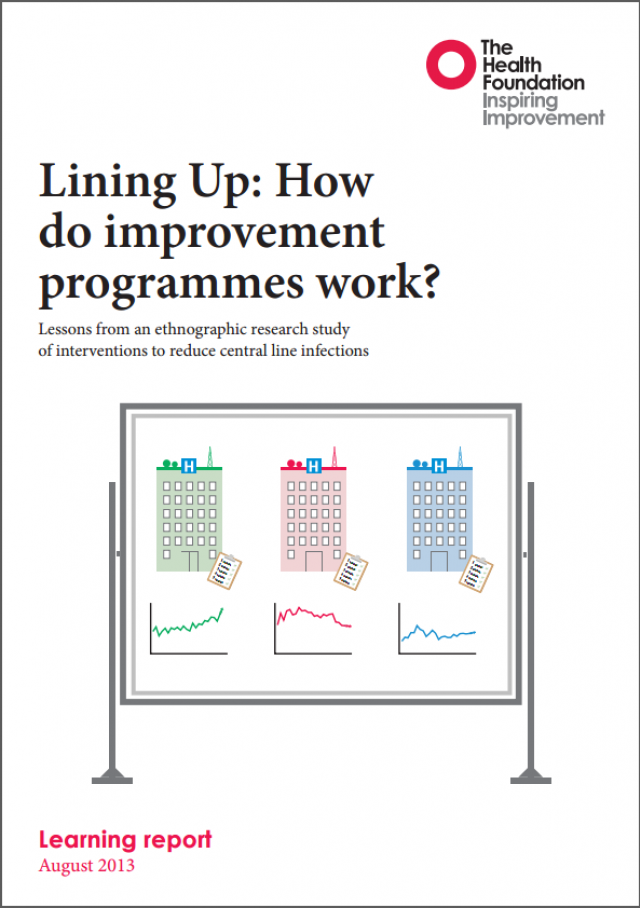Lining Up: How do improvement programmes work? Lessons from an ethnographic research study of interventions to reduce central line infections
August 2013

Key points
- Researchers found differences in the design and implementation of the programmes.
- An array of contextual influences, including local factors and the legacy of previous initiatives, had a major impact.
This learning report looks at lessons from the Health Foundation’s Lining Up research project – an investigation into interventions to reduce central line infections. It explores the reasons why promising improvement programmes can fall short when implemented in a new setting.
The Lining Up researchers set out to explain what lay behind the achievements of the successful Keystone programme conducted in the US state of Michigan, and then explore what happened when an initiative it inspired, Matching Michigan, was launched in England.
The report shows that successful replication and spread of improvement initiatives depends on a deep understanding of how and why programmes work and the contexts into which they are introduced. It also highlights the importance of understanding what has contributed to the success of an improvement intervention in any given setting, and paying attention to more than simply the technical components of effective improvement programmes.
Further reading
Work with us
We look for talented and passionate individuals as everyone at the Health Foundation has an important role to play.
View current vacanciesThe Q community
Q is an initiative connecting people with improvement expertise across the UK.
Find out more

